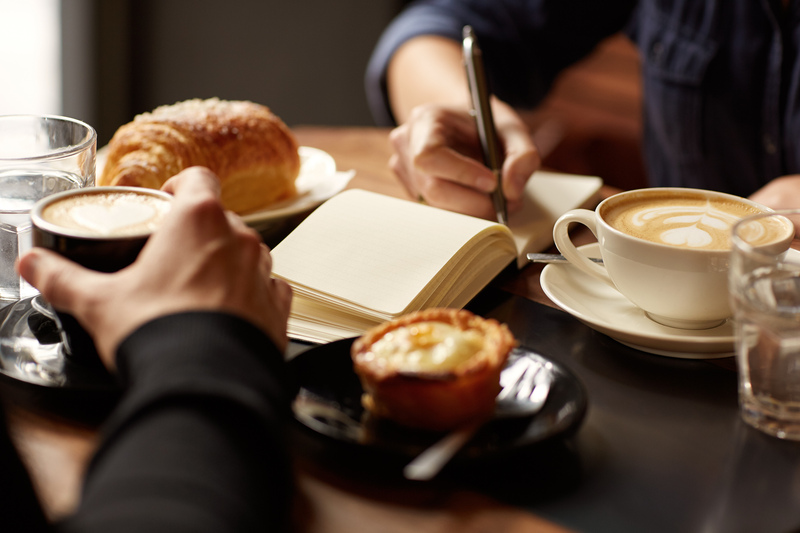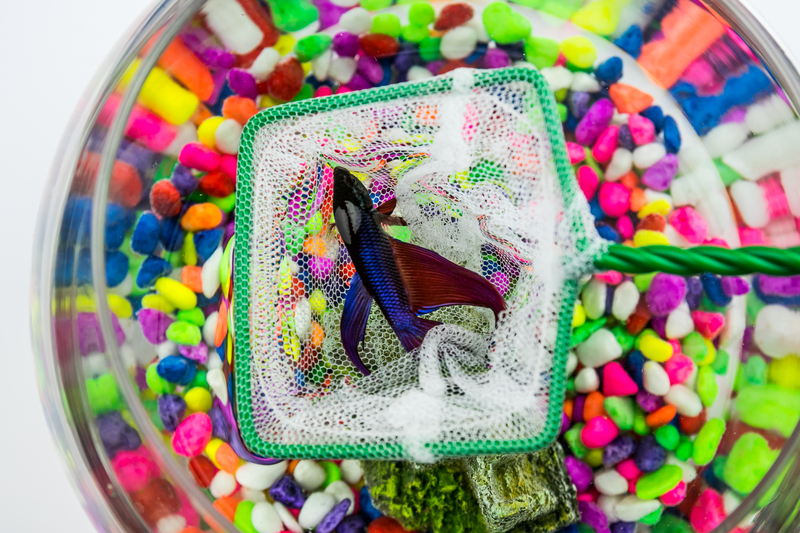Best Practices for Packing Kitchenware When Moving House
Moving house is an exciting yet challenging experience, especially when it comes to packing delicate items like kitchenware. Ensuring that your plates, glassware, utensils, cookware, and small appliances arrive in one piece requires planning, technique, and the right tools. In this comprehensive guide, we'll explore the best practices for packing kitchenware when moving house so your treasured kitchen essentials make the journey safely and efficiently.
Why Is Proper Packing of Kitchenware Important?
Kitchenware is often fragile and comes in a variety of shapes, sizes, and materials. From glass and ceramics to stainless steel and plastic, each item requires a different approach for packing. Proper packing not only prevents damage but also makes the process of unpacking and setting up your new kitchen much simpler and less stressful.
- Prevents costly breakages and losses
- Saves time during unpacking
- Makes the moving process more organized
- Reduces the risk of injury
- Ensures sentimental or valuable kitchen items remain intact

Essential Packing Materials for Kitchenware
Before you start packing, gather all necessary supplies. High-quality packing materials are crucial for protecting your kitchenware during a move. Here's what you'll need:
- Sturdy cardboard boxes in various sizes
- Dish barrels or specialty kitchenware moving boxes
- Bubble wrap
- Packing paper or newsprint
- Foam sheets or peanuts
- Stretch wrap
- Resealable plastic bags for small parts and utensils
- Packing tape (preferably heavy-duty)
- Permanent markers for labeling
- Labels or stickers
Pro Tip:
Never use printed newspaper directly on kitchenware, as the ink can transfer and stain your items. Stick with clean, unprinted packing paper instead.
Step-by-Step Guide to Packing Kitchenware When Moving Home
Organizing and categorizing your kitchen items beforehand is the key to a smooth moving process. Here's how to pack kitchenware for moving efficiently and safely:
1. Declutter and Sort the Kitchen
Start by sorting through your kitchenware. Decide what you want to keep, donate, sell, or discard. Moving time is perfect for decluttering--there's no point in packing and moving items you'll never use.
- Sort items into categories: plates, bowls, glassware, utensils, cookware, appliances, and specialty items.
- Donate or discard chipped, duplicate, or unused kitchenware.
- Clean and dry all items before packing to prevent mold or odors.
2. Prepare Packing Workstation
Set up a clear workspace with all your materials. A large table or countertop is best. Keep delicate items away from edges to avoid accidental drops.
3. Pack Plates and Dishes
Plates and dishes are prone to cracking and chipping. Follow these steps for maximum protection:
- Line the bottom of the box with crumpled packing paper for padding.
- Wrap each plate individually in packing paper or bubble wrap.
- For added protection, stack vertically (like books on a shelf), not flat. This minimizes pressure on each plate.
- Place a layer of packing paper or foam between each plate.
- Fill gaps with extra paper or bubble wrap before sealing the box.
Tip: Label these boxes as "Fragile" and indicate "This Side Up."
4. Glassware, Mugs, and Cups
Glass items need extra care. Here's how to pack fragile kitchenware for moving:
- Stuff the inside of each cup or glass with crumpled paper.
- Wrap the entire piece in bubble wrap or several layers of packing paper.
- Stand glasses upright in the box. Never lay them on their sides!
- Add generous cushioning between and on top of items.
- For stemmed glassware (wine glasses, champagne flutes), use specialty cell boxes or dish barrels for best results.
5. Bowls and Serving Dishes
Bigger kitchenware like bowls and serving platters also require protective packing:
- Fill empty spaces in bowls with paper or bubble wrap.
- Nest smaller bowls inside larger ones, separated by padding.
- Wrap each bowl and stack vertically in an appropriately-sized box.
6. Pots, Pans, and Bakeware
Heavier kitchenware like cast iron pans, pots, and baking trays need sturdy boxes and strategic packing:
- Stack pots and pans by size, with paper between each piece.
- Remove lids and wrap separately.
- Fill empty spaces (e.g., inside pots) with smaller kitchen items or crumpled paper.
- Use smaller boxes to avoid making them too heavy.
7. Utensils and Cutlery
Knives and sharp utensils present a safety risk during unpacking if not properly wrapped.
- Sort your cutlery by type (forks, spoons, knives).
- Group and wrap utensils together using packing paper or bubble wrap.
- Place in resealable plastic bags or roll up in kitchen towels.
- For knives: Wrap blades individually, then secure together with tape and mark as "Sharp." Always point blades downward in the box.
- Keep everyday utensils easily accessible for quick setup at your new place.
8. Small Kitchen Appliances
Items like toasters, blenders, and coffee makers need special attention:
- Clean and dry each appliance before packing.
- Remove and wrap detachable parts and cords.
- Pack in the original packaging if possible, adding extra cushioning for safety.
- If using new boxes, wrap appliances in bubble wrap and cushion with paper or foam.
- Label all accessory bags and attach them to the main appliance box.
9. Food and Pantry Items
Limit pantry packing to non-perishable, unopened items:
- Seal open packages tightly in plastic bags to prevent spills.
- Discard expired, half-used, or heavy glass containers.
- Label boxes with "pantry" and mark perishable items if moving a short distance.
Expert Tips for Moving Kitchenware Safely
- Label every box clearly: List contents and indicate if fragile. Use color coding for different kitchen categories.
- Don't overload boxes: Heavy boxes are hard to carry and more likely to be dropped. Keep boxes under 20kg (about 45 lbs).
- Seal boxes securely: Use strong packing tape on seams and edges.
- Load kitchen boxes last: So they're accessible when unpacking at your new house.
- Track essentials: Set aside a "first day" box with basic cookware, utensils, and plates for the first meals in your new home.
Common Mistakes to Avoid When Packing Kitchenware for a Move
- Rushing the packing process: Take your time to pack methodically. Rushing increases the risk of breakage.
- Using weak boxes: Flimsy boxes can collapse under the weight of kitchen items.
- Insufficient cushioning: Always use ample padding at the bottom, sides, and between items.
- Forgetting to label: Unlabeled boxes make unpacking confusing and increase the risk of damage.
- Poor box arrangement in the moving vehicle: Always keep fragile kitchenware boxes on top of heavier items and secure them to prevent shifting.
Environmentally-Friendly Packing for Kitchenware
You can pack kitchenware for moving sustainably with a few easy adjustments:
- Use reusable plastic bins or crates instead of cardboard where possible.
- Wrap items in towels, cloth napkins, or leftover packing blankets.
- Reuse packaging from online deliveries, such as bubble wrap or air pillows.
- Recycle or donate packing materials after your move.
How to Unpack Kitchenware After Moving
Once you arrive, follow these tips to set up your new kitchen efficiently:
- Unload and stack boxes labeled as "kitchen" in the kitchen area first.
- Start with essentials like plates, utensils, pots, and a few cups for immediate use.
- Unpack fragile items over a soft towel to prevent accidents.
- Check for damage as you unpack. Report any claims if handled by professional movers.
- Organize cabinets and drawers as you go to avoid re-packing later.
Best Packing Techniques for Different Types of Kitchenware
Packing Porcelain, China, and Ceramics
- Always wrap delicate china in at least two layers of paper or bubble wrap.
- Use cardboard dividers (glass pack kits) for extra safety.
- If the item is highly valuable, consider double-boxing for additional protection.
Packing Nonstick Cookware and Bakeware
- Avoid stacking nonstick items directly to prevent scratches--place a layer of foam or paper between pieces.
- Secure glass lids in a separate, padded box.
Packing Stainless Steel Items
- Stainless steel is more forgiving but can dent during a move. Use paper or towels as padding.
- Stack similar-shaped items to maximize space.
Packing Small Gadgets and Accessories
- Pack small items (measuring spoons, thermometers, peelers) in sealable bags or small boxes.
- Label as "Gadgets" to prevent accidental loss.
Should You Hire Professionals for Packing Kitchenware?
If you're short on time or worried about fragile items, hiring professional packers can be worthwhile. They bring experience, insurance, and proper materials for high-value or delicate kitchenware. When choosing a service, research their reviews and ask about their approach to handling breakables.

Frequently Asked Questions (FAQ) - Packing Kitchenware for Moving House
- Q: Is it better to pack dishes vertically?
A: Yes, packing plates and dishes vertically like records makes them less likely to break under pressure. - Q: Can I use newspaper to wrap my glasses?
A: Avoid using printed newspaper as it can leave ink stains. Use packing paper or bubble wrap instead. - Q: How many boxes will I need for a standard kitchen?
A: Most kitchens require 10-20 boxes of various sizes, depending on how many items you own. - Q: Should I pack appliances with food items?
A: No. Pack appliances and food items separately to avoid contamination and damage. - Q: What should go in a "first-day kitchen box"?
A: A few plates, cups, utensils, a pot/pan, cleaning supplies, and snacks or non-perishable food.
Conclusion: Ensuring a Hassle-Free Move for Your Kitchenware
Packing kitchenware when moving house doesn't have to be overwhelming. The key is planning ahead, using the right materials, and employing safe packing techniques for each type of item. By following these best practices for packing kitchenware, you'll save time, money, and stress--ensuring your kitchen is up and running smoothly in your new home.
Remember: Every extra minute spent packing properly is worth it when you unpack your kitchenware in perfect condition!
- Start early, pack carefully, and stay organized.
- Label everything and keep fragile items well-protected.
- Don't forget to reward yourself with a cup of tea or coffee in your new kitchen after you've finished unpacking.
With these expert tips on packing kitchenware for moving, you'll be well-prepared for your big move. Happy packing!



